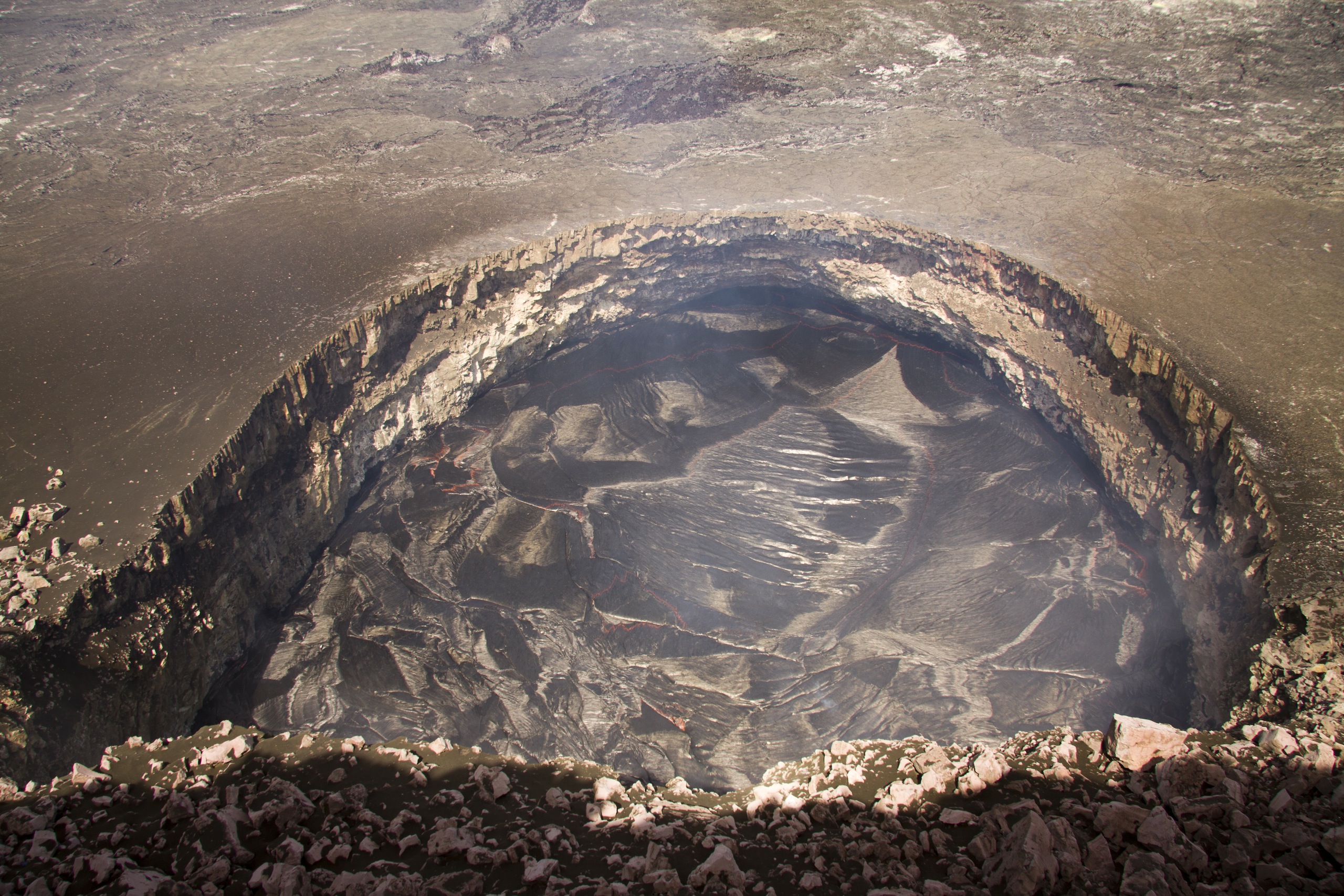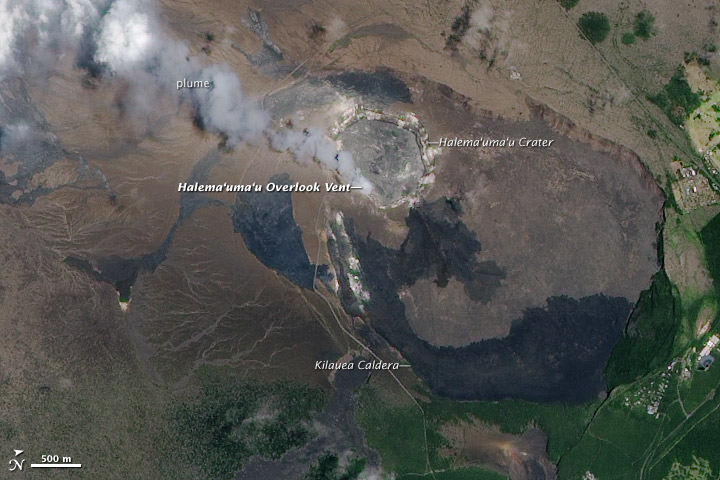Hawaii Volcano's Lava Lake Threatens to Overflow


The lava lake inside Halema'uma'u crater, at the top of Mount Kilauea in Hawaii, is closer than ever to reaching the crater floor and spilling out on it, the U.S. Geological Survey said.
The summit lava lake is deep within a cylindrical vent with nearly vertical sides. In the past two weeks, the lake level surged about 50 feet (15 meters) and now has only 110 feet (33 m) to go until the lava reaches the top of the vent and floods the crater floor, the USGS said today (Oct. 23).
"It could continue to rise and overflow," said Matt Patrick, a research scientist at the Hawaii Volcano Observatory.
For the past several months, the lava lake has been slowly rising. The summit itself has been slowly inflating since early August.The lava lake rises and falls as magma levels change within the volcano.
The connection between the vent and volcano is the reason the USGS is also keeping an eye on Kilauea's eastern rift zone, Patrick told OurAmazingPlanet. "The rising level results from pressurization of the whole magma chamber," he said.
Deep inside the volcano, the vent supplying Halema'uma'u crater is connected to the actively erupting Pu'u O'o crater. But when the summit of Kilauea inflated in March 2011, the pressure was relieved via a spectacular eruption that broke out at the Kamoamoa Vents.
But the USGS has also watched the volcano's magma chamber pressurize without producing an eruption, Patrick said. "We've seen this pattern several times in the last couple years. One time it produced an eruption, but the other times is just died down and went back to normal."
Get the world’s most fascinating discoveries delivered straight to your inbox.
The USGS has a live webcam trained on the lava lake, accessed through the Hawaii Volcano Observatory's site.
"This is really an exciting time for us," Jessica Ferracane, a park ranger at the Hawaii Volcano National Park, told OurAmazingPlanet. "We're all watching it rise and fall."
Reach Becky Oskin at boskin@techmedianetwork.com. Follow her on Twitter @beckyoskin. Follow OurAmazingPlanet on Twitter @OAPlanet. We're also on Facebook and Google+.




